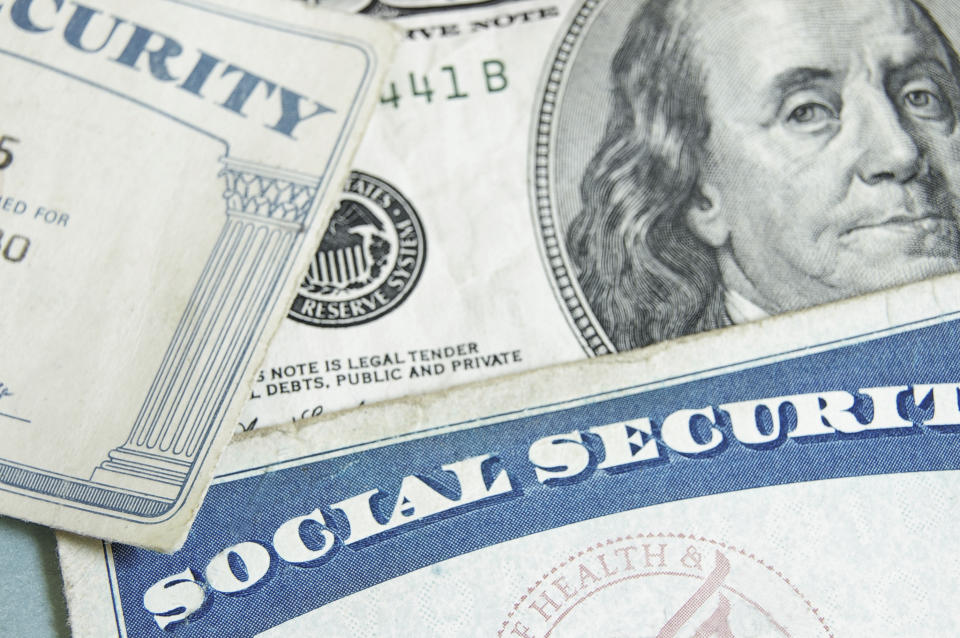3 Big Reasons to Check Your Social Security Statement
Approximately 90% of senior citizens receive Social Security benefits. The Social Security Administration (SSA) will pay out more than $1 trillion for benefits to 64 million Americans this year alone.
Not only does Social Security cover the vast majority of the over-65 set, but it provides essential economic support. On average, Social Security benefits constitute one-third of retiree income. Roughly 44% of single retirees and 22% of married retirees rely almost solely on Social Security for their income.

IMAGE SOURCE: GETTY IMAGES.
Even if you feel light-years away from retirement, it's important to have a handle on your eligibility for Social Security and how much you can expect to receive.
All this information can be found in your Social Security statement, which is compiled by the SSA every year. The easiest way to access the statement is to go to the SSA's website, www.ssa.gov, and create a my Social Security account. You can download your statement once you've done so.
You can also request that one be sent to you by mail here. Paper statements are also sent through the mail automatically to people who are 60 and older but not yet drawing their Social Security benefits. The statements are mailed three months before your birthday.
It's important to check your Social Security statement periodically for three reasons.
1. Check your eligibility for Social Security benefits
Although the vast majority of older Americans receive Social Security benefits, everyone has to qualify for benefits based on their work record first. Your statement tells you, in the first line on page 1, whether you have qualified or not.
Here's how the qualification works. All workers need 40 Social Security work credits to qualify. You receive one work credit for a certain amount of earnings every year. For 2019, one work credit is earned for every $1,360 in earnings. (The figure that gives you one work credit is revised periodically.) You can earn four credits per year. In other words, once you earn $5,440 in 2019, you've earned the maximum four Social Security credits for the year.
If you've worked steadily, becoming qualified is pretty straightforward. But if you've worked only intermittently, checking your Social Security statement will let you know if you're on track to qualify for benefits. Let's say you're 45 and only have 20 work credits. You can plan specifically to ensure that you work enough each year to attain the other 20 before you retire, or you could miss out on benefits entirely.
2. Verify your work and earnings record
On page 2 of the statement, you'll see your earnings record, broken out by year. It's important to check your records against the statement.
Here's why. Your Social Security benefits are calculated by averaging inflation-adjusted salaries from the 35 years in which you earned the most, up to each year's minimum covered by Social Security. In 2018, for example, the maximum earnings taxed by Social Security was $128,400, so the SSA didn't tax earnings over that.
If the SSA has the wrong information, you could end up receiving less in benefits than you're entitled to. If you uncover erroneous information about your earnings, contact the SSA to have it corrected.
3. Plan by knowing your estimated benefits at retirement
Social Security benefits are not one-size-fits-all figures. The amount of your benefit will depend on how much you earned and on when you retire.
Your Social Security statement provides estimates of your benefits at the age of 62, at your full retirement age (FRA), and at the age of 70 on p. 1. Your FRA is determined by birth year. It's 66 for folks born in the 1943-1954 period and 67 for folks born in 1960 or after. For people born in the 1955-1959 period, it's 66 and an incrementally rising number of months. To see your FRA, check here.
You become eligible to take retirement benefits at 62, but benefits are reduced if you take them before your FRA. They remain at the reduced level for the rest of your life.
Conversely, if you delay taking retirement benefits past your FRA, your benefit amounts climb. They increase roughly 8% for every year between FRA and 70, at which point they reach the maximum amount.
Your estimated benefits at 62, FRA, and 70 will show you the variable amounts you can expect to receive at these ages given your earnings to date. It's an important planning tool as you think through when you might choose to retire and how much income you will have from Social Security once you do.
Once you have an estimate of that figure, it becomes easier to determine whether you have enough in retirement savings or need to hike your contributions. It will also give you a sense of whether working part time in retirement may be necessary or helpful.
The estimates of your Social Security benefits will change according to your earnings each year. They may also change according to changes in Social Security law and funding. Keeping abreast of any changes will aid you in mapping out your life in retirement.
So don't delay checking on these three key points. Doing so will help you avoid surprises and plan wisely for your future.
More From The Motley Fool
The Motley Fool has a disclosure policy.
